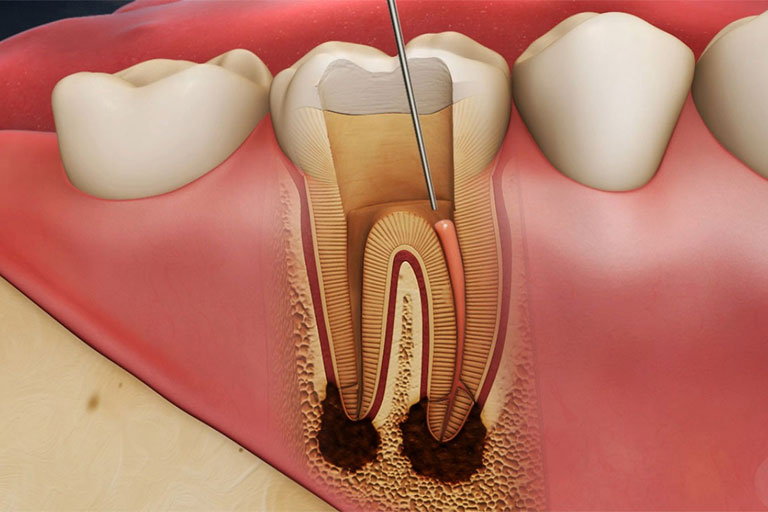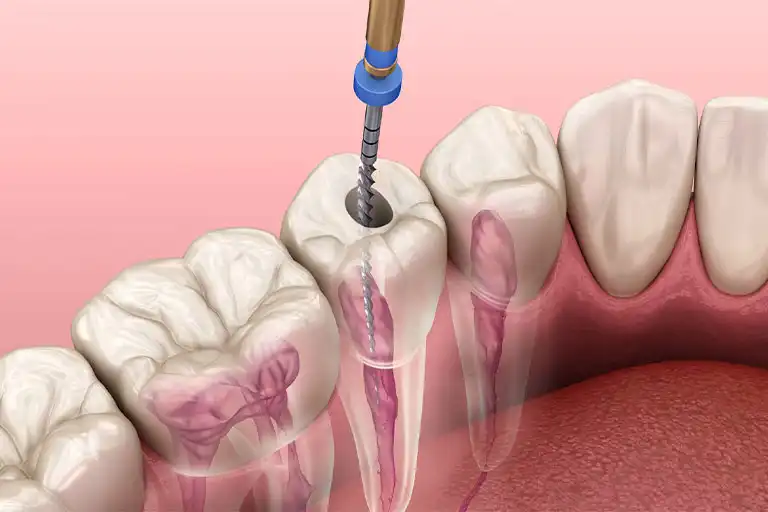A root canal can cause feelings of anxiety and fear. Root canals have the stigma of being painful and time-consuming procedures that can be very uncomfortable to endure. Some of the misconceptions about root canals are due to a lack of sufficient and correct information. Some others are because of the unpleasant experience of people with root canal treatment due to referring to non-specialist dentists, which has caused many people to avoid this common dental procedure. Although the treatment aims to treat your pain not cause it, there are many other myths about root canal that have made people afraid of it.
8 common myths about root canal
Here we will discuss common myths about root canal so that you won’t have any concerns.
1-Root canal is painful
Pulp infection and tooth inflammation cause pain and discomfort to the patient. With root canal treatment, this infection and inflammation are completely eliminated, and the toothache is relieved. Therefore, we can say that root canal not only will not cause pain, but it can also eliminate your tooth pain.

Today, dentists use local anesthesia and the patient will no longer feel any pain. In cases where the tooth infection is very severe, the patient feels a lot of pain, so the dentist prescribes antibiotics before the root canal treatment to reduce the pain and infection of the patient’s tooth.
2-Tooth Extraction is much better than root canal
Dentists are trying to preserve the patient’s natural teeth as much as possible. Tooth extraction creates an empty space in the mouth and causes complications. Among these complications, we can mention difficulty in chewing, jaw pain, bite problems, and displacement of adjacent teeth towards the empty space of the jaw.
As a result, root canal can be the best and most cost-effective way to save and preserve your natural teeth.
3-Root canal causes other diseases
Some people have the wrong idea that root canals will cause other diseases. Such a claim is completely wrong and root canal treatment is a safe and completely safe method. In addition, nerve removal causes the treatment of tooth infection and the destruction of bacteria in the root canal.
4-The tooth pain disappears immediately after the procedure
One of the misconceptions about root canal is the immediate disappearance of pain after the treatment. With denervation of the tooth, the nerve is completely destroyed and the pain signal is no longer transmitted. However, due to the inflammation of the adjacent tissues, the patient will feel pain in these areas for several days. According to the condition of the patient, this pain can be felt permanently or only during chewing.
Tooth pain after root canal is tolerable and the patient can take painkillers to relieve this pain until recovery.
5-Root canal means pulling the root of the tooth
Another myth about root canal is that, in this process, the root of the tooth is completely pulled. That seems beyond a myth.
In this procedure, the central part of the tooth called the pulp is cleaned and disinfected and it is filled with special materials. The root causes the strength of the tooth in the jaw and its stability, and if the root is removed, the tooth will fall.
6-You must visit the dentist for several sessions
The number of dental sessions in a root canal procedure depends on the number of treated teeth, complexity of root canals, and the level of tooth infection.
In cases where the tooth has a severe infection or you might need a crown, the procedure might take two dental appointments. At first, the dentist prescribes oral medicine and after a few days making sure the infection is completely removed, the treatment process can be completed. Typically, root canal treatment can be done in one hour to two hours.
7-If the tooth does not hurt, it does not need root canal
Pain and sensitivity are the most common symptoms of a pulp infection. When you delay a root canal to treat the damaged pulp, the infection gets worse and leads to pulp necrosis or pulp death.
As infections spread to the entire root canal, it causes dental abscess (formation of pocket of pus). You may have other symptoms like swelling, fever, or a bump near the tooth. This indicates a serious infection and you should visit the dentist as soon as possible.

If the tooth does not hurt, this doesn’t mean everything is right all the time. When the nerve dies, there is no signal of pain.
Also, the bump on your gum is actually a channel for the discharge of infectious secretions of the dental tissue. This channel takes the pressure resulting from the accumulation of infection inside the tissue and causes the patient not to feel pain in their tooth. This infection requires debridement and if it is not treated in time, it can cause infection of the adjacent tissues.
8-Root canal cannot be done on the same tooth again
Another false belief about root canal is if the tooth treated with this method becomes infected, you should pull it. Root canal treatment has a success rate of about 85%. But after a period if this tooth gets infected, your dentist or endodontist may opt for retreatment. Your tooth can be saved and preserved by repeating the process of root canal treatment.
